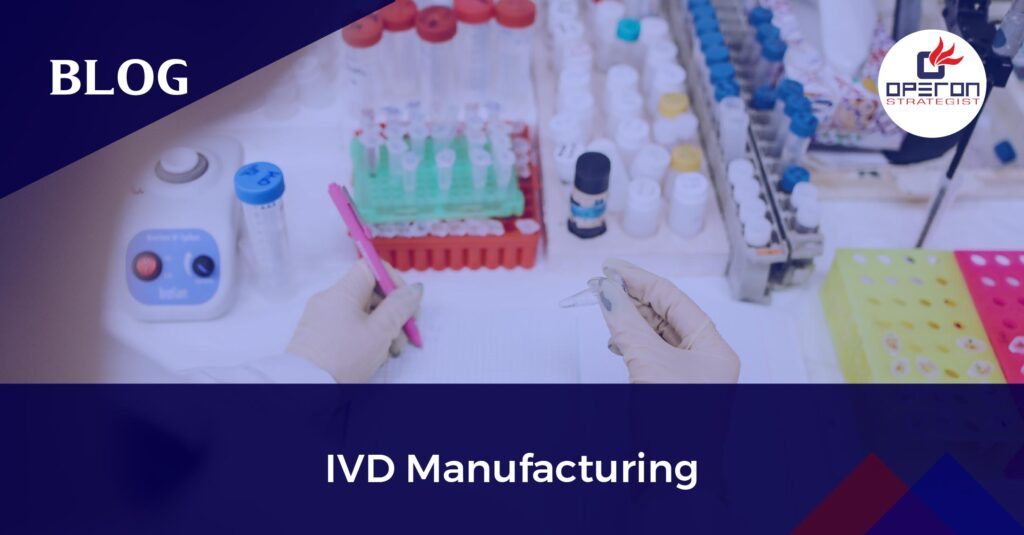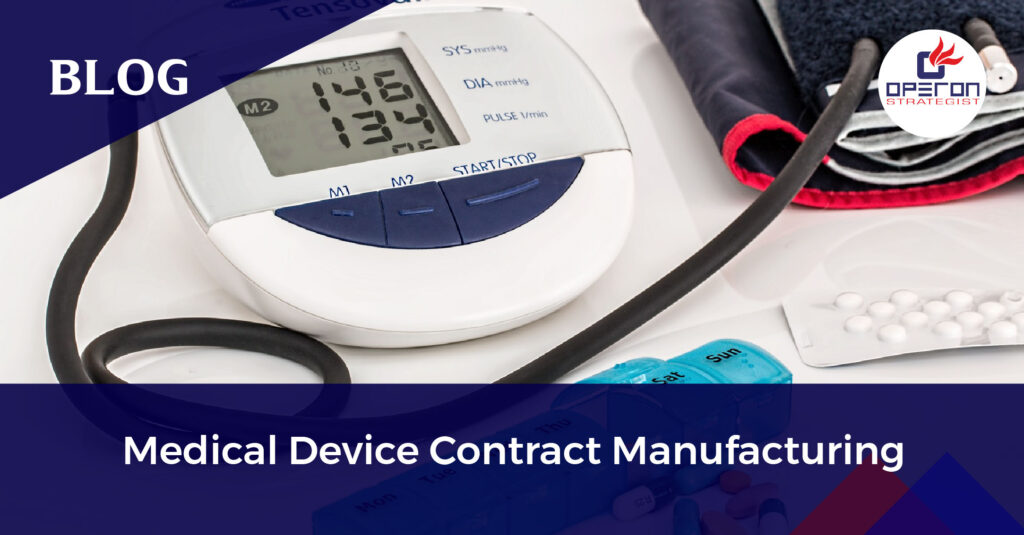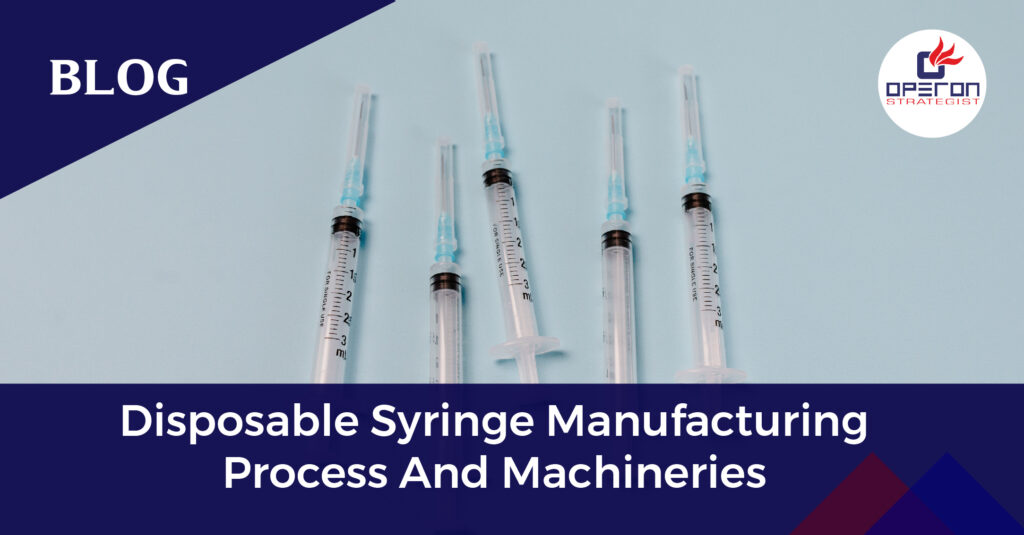Operon Strategist specializes in guiding companies through the complex process of obtaining a CDSCO manufacturing license for In-Vitro Diagnostic (IVD) devices. With a deep understanding of regulatory requirements and years of industry experience, Operon Strategist provides comprehensive support, from documentation preparation to liaising with regulatory bodies. Our expert team ensures a smooth, efficient path to compliance, enabling your business to focus on innovation and market entry with confidence.
IVD Manufacturing Overview
In-vitro diagnostics items are those reagents, instruments, and frameworks expected for use in finding sickness or different conditions. Including an assurance of the condition of well-being, to fix, alleviate, treat, or forestall illness or its sequelae. Such items are proposed for use in the assortment, arrangement, and assessment of examples taken from the human body.
In-vitro diagnostics may likewise be utilized in exactness medication to recognize patients who are probably going to profit from explicit medicines or treatments. These in vitro diagnostics can incorporate cutting-edge sequencing tests, which check an individual’s DNA to recognize genomic varieties. A few tests are utilized in the lab or other well-being proficient settings and different tests are for shoppers to use at home.
Looking for IVD Manufacturing Consultants?
Let’s have word about your project
Classifications of IVD Medical Devices
IVD medical device classification is divided into four risk classes based on the manufacturer’s intended purpose for the devices:
| IVD classification | Level of risk |
| Class A | No public health risk or low personal risk |
| Class B | Low public health risk or moderate personal risk |
| Class C | Moderate public health risk or high personal risk |
| Class D | High public health risk |
Under the MDR 2017, In Vitro Diagnostic Devices (IVDs) fall into Class A, Class B, Class C, and D categories. Prior to granting manufacturing licenses for Class B, C, and D IVDs, site inspections are mandatory. Therefore, ensuring an accurate manufacturing plant layout design is crucial. Engage an experienced consultant to provide comprehensive guidance across all aspects of the site. Manufacturing companies must submit technical and administrative documentation to the State Licensing Authority (SLA) to initiate the manufacturing license application process.
CDSCO Manufacturing License for IVD Devices
The CDSCO manufacturing license for IVD (In Vitro Diagnostic) devices is a crucial regulatory requirement for manufacturers looking to produce diagnostic devices in India. This license ensures compliance with quality standards and regulatory guidelines set forth by the CDSCO, guaranteeing the safety and efficacy of diagnostic products. Obtaining the CDSCO IVD device manufacturing license involves rigorous documentation, facility inspections, and adherence to Good Manufacturing Practices (GMP). It not only demonstrates the manufacturer’s commitment to quality but also ensures that diagnostic devices meet the necessary standards for accurate and reliable results in healthcare settings.
Note: To manufacture products in India, manufacturers must acquire a CDSCO manufacturing license. Additionally, to import products from abroad for sale within India, a CDSCO import license is required.
IVD Manufacturing Processes
The IVD manufacturing cycle can disregard ideal arrangements if existing practices or supported advancements are acknowledged without satisfactory addressing. The fruitful advancement of new IVD items relies on first setting up the correct item definition. An item definition is a manual for advancement. It ought to contain an ideal item idea and a complete rundown of prerequisites that assist originators with settling on decisions all through the improvement venture and that permit advertisers to comprehend what benefits the item will convey and how it will find a way into the market.
The item definition measure is the aftereffects of various undertakings, including expansive partner requests, perceptions, appraisals, examinations, estimations, and choosing and applying skill, inventiveness, and advancement. Different devices are accessible to help with such exercises. This article inspects a portion of these instruments and presents a case of how they can deliver an advancement result.
For each IVD advancement venture, the different apparatuses related to each progression are chosen depending on their capacity to gather information effectively and their proper expense of utilization. In the model advancement venture talked about in this article, the accompanying instruments are analyzed:
- Stage 1: Contextual request, market hole investigation, needs positioning framework
- Stage 2: Functional investigation
- Stage 3: Concept-determination network
These are the three steps for determining the product in manufacturing IVD.
IVD Manufacturing Machinery
Machinery used:
- Injection molding machine
- Set of molds for various parts
- Set of molds for Drip Chamber, Airway spike, Airway cap, spike protector, clamp, roller connector, and male lure lock.
- Sealing machine
- Automatic packaging machine
- Blister Packaging machine
- Sterilization Plant
- Scrap Guiding machine
- Weighing scale
- Water Pump
- Air Compressor
- Chilling Plant
- Testing Equipment
- Electrical Fittings & Socket
These are the components of IVD manufacturing machinery. All the components are manufactured by the molding process. Then they are sub-assembled into different subassemblies such as Drip chamber Assembly, Clamp & Roller Assembly, Male Luer assembly, and Y connector sealing with a rubber tube. All these subassemblies are then assembled along with the tube.
Start Your Manufacturing Project of IVD Devices With the Help of an Operon Strategist
We have been working as medical device consultants for more than 10 years and providing regulatory services to manufacturers. If you have any questions about IVD manufacturing feel free to contact us. We provide Turnkey Solutions to manufacturers for their medical device manufacturing plants.
- adminhttps://operonstrategist.com/author/admin-2/
- adminhttps://operonstrategist.com/author/admin-2/
- adminhttps://operonstrategist.com/author/admin-2/
- adminhttps://operonstrategist.com/author/admin-2/




